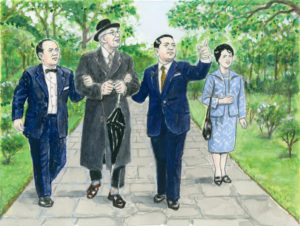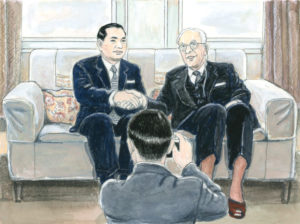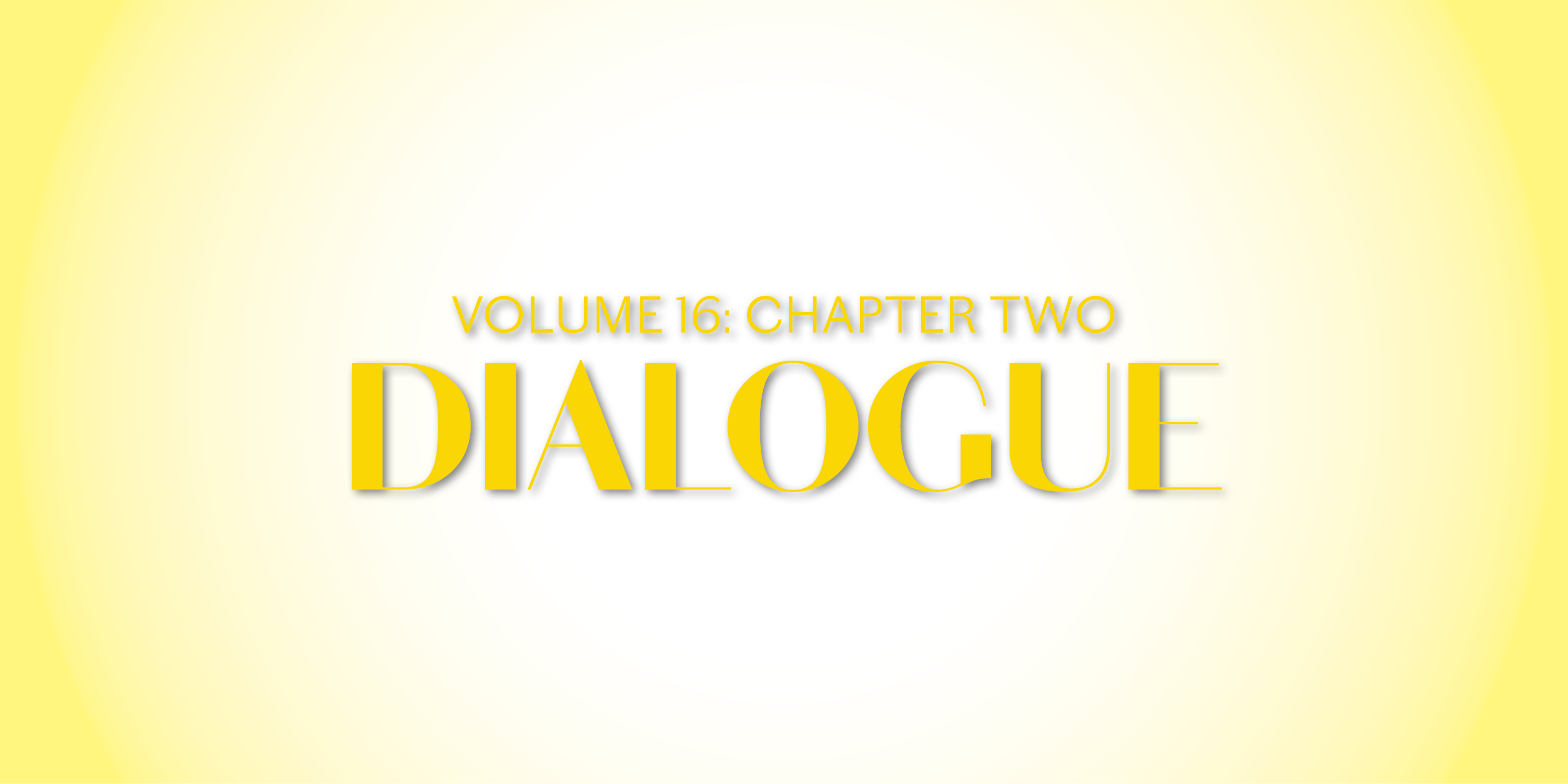Chapter Summary

Illustration courtesy of Seikyo Press.
On April 29, 1972, Shin’ichi Yamamoto left for Europe and the United States. The primary focus of the trip was his dialogue with British historian professor Arnold J. Toynbee.
In the autumn of 1969, Shin’ichi received a letter from the professor inviting him to engage in discussion. Dr. Toynbee explained that he took notice of the Soka Gakkai while seeking a way for humanity to solve a number of fundamental issues, and he personally invited Shin’ichi to visit him in London.
On May 1, 1972, Shin’ichi participated in the inaugural ceremony for the Soka Gakkai’s new Paris headquarters. Then, on May 5, he visited Dr. Toynbee at his residence, commencing the dialogue between the great scholar and the youthful Buddhist leader.
Although they represented different generations and cultures, the minds of the two men found resonance in their mutual concern for humanity’s future. The two covered not only the philosophy of life but also such subjects as the philosophy of history, learning and art. There was no shortage of discussion topics, which prompted Dr. Toynbee to invite Shin’ichi back to London the following May. The dialogue, which lasted for 40 hours over two years, later resulted in the book titled Choose Life.
The professor expressed his wish for Shin’ichi “to continue engaging in such dialogues … with the aim of unifying humanity” (The New Human Revolution, vol. 16, p. 170), and his hope that Shin’ichi “would generate a dynamic groundswell of dialogue around the world” (NHR-16, 172). Shin’ichi subsequently embarked on a journey of dialogue with world leaders and scholars that transcended barriers separating humanity and brought the world closer together by linking people’s hearts.
Unforgettable Scene

Illustration courtesy of Seikyo Press.
Predicting Global Recognition
In May 1972, Shin’ichi Yamamoto accepted an invitation from British historian professor Arnold J. Toynbee to join him at his home for a discussion that covered a wide range of topics. He visited Dr. Toynbee’s home again in May the following year. On the final day of his visit, Shin’ichi asked Dr. Toynbee for personal advice.
Dr. Toynbee fixed his gaze on Shin’ichi and replied softly that he felt it rather impertinent for him, an academic, to offer advice to Shin’ichi, a person of action and the leader of a very important Buddhist organization.
Shin’ichi was humbled and moved by Dr. Toynbee’s modesty. The historian then added that there was one thing he felt he could say, which was that he and Shin’ichi appeared to agree on the kind of life a human being should live. The Middle Way that Shin’ichi advocated, he remarked, was surely the best path to follow.
■ ■ ■
“As your student, what grade would you give me?” Shin’ichi asked. With a smile, Dr. Toynbee said he would give Shin’ichi an A … Thanking Dr. Toynbee for his generous estimation, Shin’ichi said: “ … Having received an A from you, Dr. Toynbee, I am further determined to struggle against all negative forces that seek to bring suffering to humanity.”
Smiling warmly, Dr. Toynbee encouraged Shin’ichi to fight for the sake of humanity’s future. He then remarked that he was certain Shin’ichi’s efforts for peace would eventually win him global recognition. Noting that he himself had received honorary doctorates from Oxford and several other institutions, he predicted that Shin’ichi, as the top student of Toynbee University, would be bestowed with many more such honors from institutions worldwide than he had. (NHR-16, 168–70)
Key Passage
The teachings we uphold are manifested through our character and our behavior. It is entirely due to the behavior and actions of its followers that Nichiren Buddhism has become a world religion and spread to nations around the globe. (NHR-16, 126)
You are reading {{ meterCount }} of {{ meterMax }} free premium articles

